
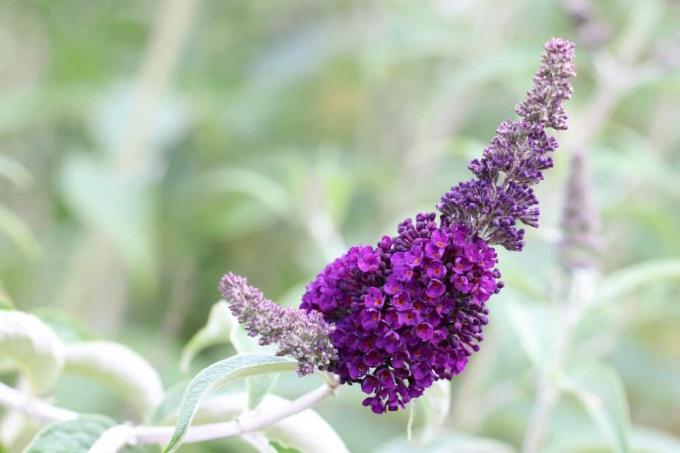
Table of contents
- Different types of mixed hedges
- Flowering tall hedge first example
- Flowering tall hedge second example
- Flowering low hedge
- Mixed hedge for birds
- Fragrant Hedge
- Hedge for insects and butterflies
- Beech hedge with two leaf colors
- butterfly bush hedge
- cinquefoil hedge
A hedge as a privacy screen or border does not always have to be monotonous, evergreen and consist of one type of plant. There are many other options here, especially to design a colourful, mixed hedge. The hedge should also match the overall picture of the rest of the garden, and this is one natural or cottage garden, then the hedge should also be laid out similarly to the following article explained.
Different types of mixed hedges
If you want to make your garden colorful and if you want a simple green hedge from just one plant species is too boring, they usually want a colorful hedge as a privacy screen or demarcation invest. There are many different variants, each with a different meaning and purpose. The hedges can be combined from different plants with very different flowers as well as plants of the same variety and different colored leaves or flowers. The following mixed hedges can be cultivated to match the overall picture of the garden:
- blooming tall hedge
- blooming low hedge
- hedge for birds
- fragrant hedge
- Hedge for insects and butterflies
- Two-tone beech hedge
- Hedge of different butterfly bushes
- Mixed cinquefoil hedge
Tip:
If you want to create a mixed hedge, you should not choose too many different types of hedges. For a length of about four to five meters, up to four different plant species are sufficient, which should be selected here.
Flowering tall hedge first example
If the hedge is to serve as a property boundary and privacy screen, then it must also be planned high enough. However, the following bushes and shrubs are not evergreen and shed their leaves in autumn, allowing a clear view in winter. However, these are shrubs that sprout again early in the spring, making the hedge opaque again.
bridal spar(Spiraea arguta)

- Flowering time between April and May
- small, single, densely growing, white flowers
- Flower umbels look like bridal veils
- spherical growth
- up to two meters high
- any soil suitable
- sunny location
- hardy
- annual pruning required
forsythia(Forsythia intermedia)

- Flowering time in March/April
- before the leaves sprout
- yellow, bell-shaped, small flowers
- almost any nutrient-rich soil is suitable
- bright, sunny location
- hardy
- must be cut
- otherwise flowering will subside
butterfly bush(Buddleja davidii)
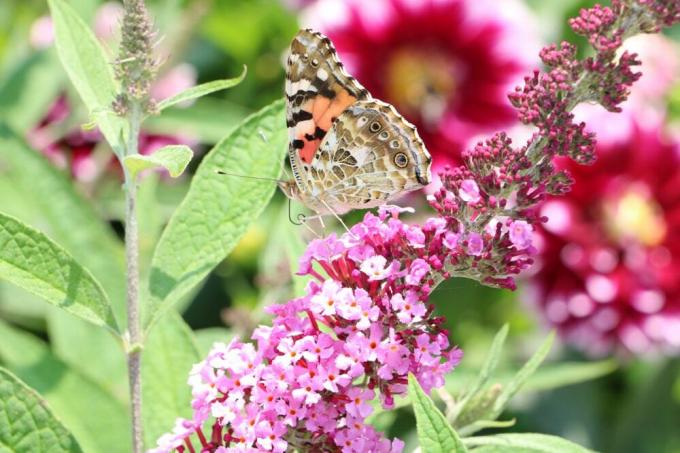
Weigela rosea(Weigela rosea)

- light pink flowers
- Flowering time between May and June
- dark green leaves
- Growth height up to three meters
- Partial shade or full sun
- water-permeable substrate
- hardy
Flowering tall hedge second example
Since not too many bushes and shrubs should be mixed in a hedge, otherwise it could look too hectic and untidy, the plants were divided into two examples. It looks decorative when five specimens of each shrub are mixed together over a length of four to five meters. This is how the first four different shrubs are planted and this mixture is then repeated five times. This is how the hedge becomes harmonious.
Stuffed garden jasmine(Philadelphus virginal)
- fragrant, creamy white flowers
- Flowering time between May and June
- fast growing shrub
- needs pruning every year
- sunny location
- nutrient-rich and permeable substrate
- hardy
common lilac(Syringa vulgaris)
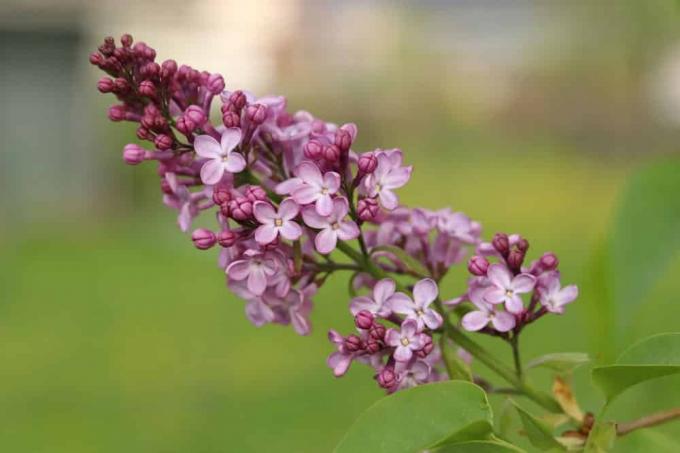
- since the 16th Century in the local latitudes
- purple flowers
- small flowers close to compact umbels
- Flowering time May to June
- keep small by cutting
- otherwise becomes too high in the hedge
- sunny location
- nutrient-rich, well-drained soil
- hardy
cornel(Cornusmas)

- inconspicuous flowers in spring
- forms light red fruits
- appear late summer to fall
- only edible for birds
- sunny location
- suitable for almost all garden soils
- Regular pruning required
- hardy
butterfly bush(Buddleja davidii)
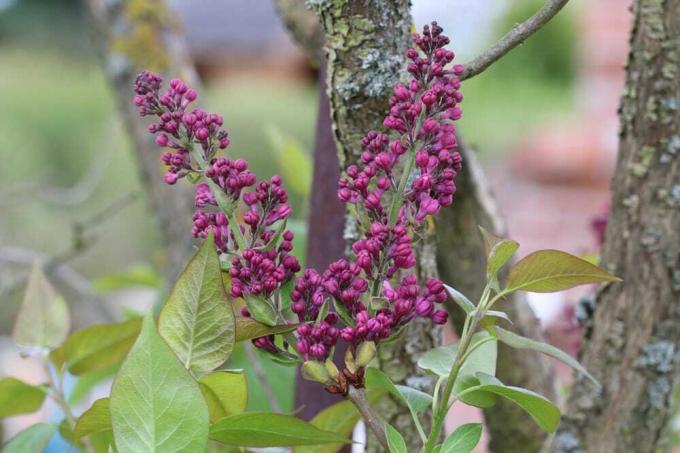
Tip:
Of course, you can also mix and match the examples from the tall, blooming hedges as you like. All shrubs go well together as they can reach the same height, are deciduous, and desire the same soil condition and location.
Flowering low hedge
The following shrubs are particularly well suited for a low, flowering hedge in a front yard or as a garden bed border. They do not take up much space in height, but are not suitable as privacy screens either.
Amethyst Berry Magic Berry(Symphoricarpos doorenbosii 'Magic Berry')
- pink, small berries
- after flowering from the end of July
- Flowering period from May to July
- Flower white to pink
- Growth height up to one meter
- location in full sun
- Soil permeable, fresh and rich in nutrients
- hardy
cinquefoil(Potentilla fruticosa) "Goldfinger"

summer pier(Spiraea japonica and Spiraea bumalda)
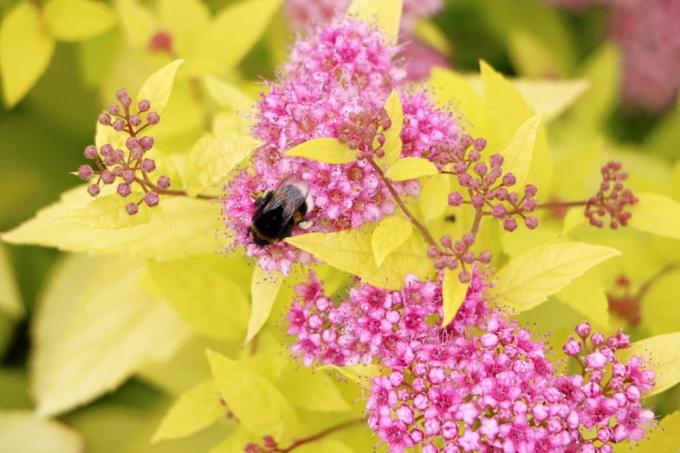
- Growth height up to 70 centimeters
- dark pink small flowers
- on umbels of flowers
- Flowering time between July and September
- Leaves golden to bronze
- undemanding to substrate
- bright to full sun location
- hardy
Petite Deutzia(Deutzia gracilis)
- Growth height up to one meter
- snow-white bloom
- Flowering period from May to June
- regular pruning required
- Partial shade to full sun
- Soil conditions moist and nutrient-rich
- hardy
Mixed hedge for birds
Shrubs and bushes that produce colorful berries in autumn and that provide food for the native songbirds are particularly suitable for a natural garden in which birds should not be missing. This is how the following mixture of shrubs was put together that will attract many birds to the garden. The animals will also like to build their nests in such a hedge.
amethyst berry(Symphoricarpos doorenbosii 'Magic Berry')
Single Hawthorn(Crataegus monogyna)
- native hedge plant
- grows very dense
- thorny branches
- Birds like to nest here
- flowering in May
- pink to white flowers
- Cut back in protective clothing
- bright to sunny location
- good wind tolerance and hardy
- normal garden soil
cornel(Cornusmas)

Copper Rock Pear(Amelanchier lamarckii)

- white flower clusters in spring
- yellow autumn leaves
- can get very high
- must therefore be cut in height
- likes to run wild
- hardy
- tolerates a shady location
- ideal sunny location
- Soil moist and well drained
A notice:
It doesn't matter if it's a hedge designed specifically for birds, if you want to trim your hedge then you should follow the Nature Conservation Act. Between the 10th March and the 30th September the hedge must not be cut so that the nesting birds are not disturbed here.
Fragrant Hedge
The hedge from the following shrubs was put together from particularly fragrant specimens and is therefore suitable as a hedge near the terrace or another seating area in the garden. The shrubs can also grow tall enough to keep prying eyes away.
- Stuffed garden jasmine(Philadelphus virginal)
- common lilac(Syringa vulgaris)
- butterfly bush(Buddleja davidii)
- Petite Deutzia(Deutzia gracilis)
Tip:
In order for the hedge to develop its beautiful, fragrant flowers every year, it needs regular pruning every year.
Hedge for insects and butterflies
The following shrubs for the natural insect garden are fragrant and therefore also attract many butterflies and useful insects. This suggestion for a colorful mixed hedge is also suitable for cottage gardens.
blood currant(Ribes sanguineum)
- beautiful red to pink flowers
- Flowering time from March to May
- hydrangea species
- prefers partial shade
- Soil moist and well drained
- needs regular pruning
- hardy
- bridal spar(Spiraea arguta)
- common lilac(Syringa vulgaris)

- butterfly bush(Buddleja davidii)
A notice:
As you will notice, some of the shrubs are listed here multiple times under different types of hedges. This is because all the shrubs and bushes explained here lend themselves to many types of variegated mixed hedges.
Beech hedge with two leaf colors
If you want a simple hedge without flowers and berries, but still colorful, you simply mix blood and copper beech and thus gets a colorful picture in his garden through the different colored leaves. The hedge can also be so high that it is also well suited as a privacy screen.
copper beech(Fagus sylvatica f. purpurea)
- dark purple leaves
- Leaves fall off in spring
- then immediately new sprouting
- Location sunny to semi-shady
- Soil moist and well drained
- hardy
- regular pruning required
European beech(Fagus sylvatica)
- early leaves light green
- turn dark green in summer
- turn brown in autumn
- dried leaves stick
- Sun to semi-shade
- keep slightly moist
- soil rich in nutrients
- fast growing
- regular pruning required
- hardy
butterfly bush hedge
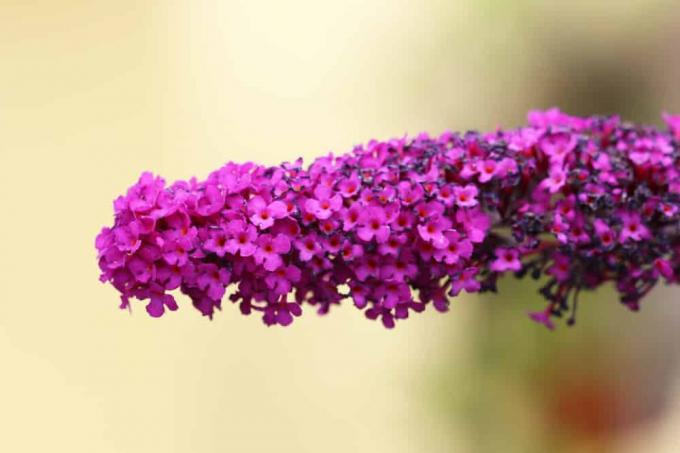
There are many different varieties of the graceful butterfly bushes (Buddleja davidii) in a wide variety of flower colors. So these shrubs are also suitable in your own hedge, because the variety is great here. In the following, red-purple, blue-purple, pink and white flowers were mixed in a hedge.
"Empire Blue"
- Flowering time between July and October
- Flower strongly fragrant
- lilac and blue flowers form clusters
- Location sunny to semi-shady
- Soil moist and well drained
- moderately hardy
- cut back regularly
"Pink Delight"
- Flowering time July to October
- Flower color pink
- sitting on long grapes
- sunny to partially shaded location
- soil moisture normal
- moderately hardy
- Cut back once a year
"Royal Red"
- Flowering time between July and October
- flower color purple
- Flowers are on long racemes
- Sun to semi-shade
- Soil always slightly moist
- moderately hardy
- regular pruning
"White Profusion"
- white flowers on long racemes
- Flowering time from July to October
- sunny to partially shaded location
- Always keep the soil slightly moist
- conditionally hardy
- Cut back once a year
Tip:
Since all butterfly bushes are only partially hardy, these are only suitable for a hedge in a milder climate area. Otherwise, the entire hedge would have to be protected with plant fleece and brushwood mats in very frosty temperatures.
cinquefoil hedge

Finger bushes (Potentilla fruticosa) are also available in different colours. The following hedge was composed of three colors and fits perfectly as a low hedge in the front garden, as a bed border or as a terrace border.
"Abbotswood"
- Growth height up to one meter
- Flowering from June to October
- decorative small white flowers
- leaves blue-green
- hardy
- Location sunny and bright
- Soil is permeable and moderately moist
- nutrient-rich substrate
- cut annually
"Goldfinger"
- Growth height up to 110 centimeters
- Flowering between June and October
- long yellow flowers
- Leaves fresh green
- hardy
- sunny location
- well-drained, fresh, nutrient-rich soil
- cut back regularly
"Red Ace"
- Growth height up to 60 centimeters
- Flowering between May and October
- many red to orange, long flowers
- Leaves light to medium green
- fresh, well-drained, nutrient-rich substrate
- bright to sunny location
- hardy
- a pruning is not necessary
Tip:
Above all, all finger shrubs can deal well with a drought that can last for several days.
 Home editorial office
Home editorial office
Learn more about hedges
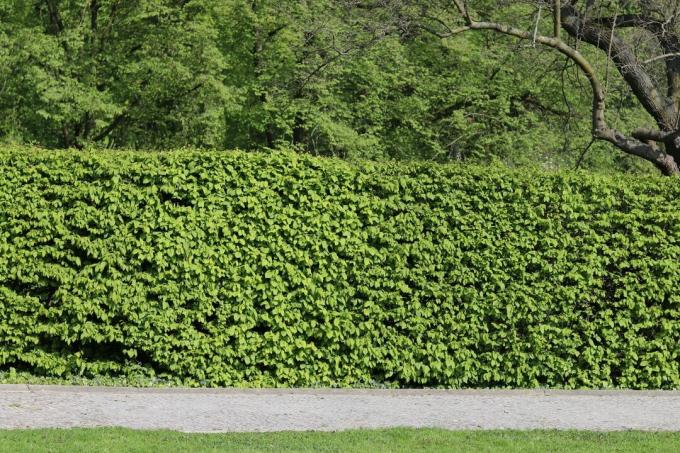
Hornbeam hedge: 17 tips for care
Hornbeams (Carpinus betulus) are most commonly used as topiaries or hedge plants. They are actually not beeches at all, but belong to the birch family. The hornbeam is very robust, easy to care for and, in contrast to the common beech, not poisonous.
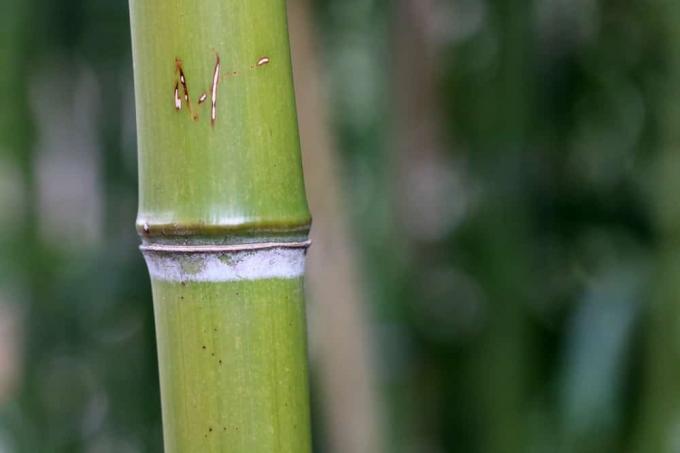
How fast does bamboo grow? | Information about growth
In domestic gardens, bamboo is usually used as a privacy screen or as a decorative solitary plant. The rapid growth, which can reach several cm a day, is impressive. It depends on the bamboo variety, care and the prevailing microclimate.

How fast does cherry laurel grow? | accelerate growth
The cherry laurel is a fast and densely growing tree. After planting, it usually only takes a few years for the young plants to grow into a tall, dense and evergreen hedge. In addition, growth can be accelerated by additional precautions.

Yellow cypress | 9 tips for care, pruning & growth
The yellow cypress is one of the most common hedge plants in our gardens. No wonder: it combines a great look with an opaque growth. How to properly care for them, cut them and generally promote their growth is here.

Thuja brabant turns brown or yellow: what to do? 8 common causes
When Thuja brabant turns yellow or brown, various factors can be responsible - but care mistakes are often the trigger. We reveal which factors are involved and how they can be counteracted.

The optimal hedge: Arborvitae, yew and cypress trees are good
Green hedges fulfill two wishes at once: they are a fence and at the same time a piece of nature. They do their job perfectly and still leave room for beauty. They do not weather and do not need painting. May it be a tree of life, yew or cypress?



